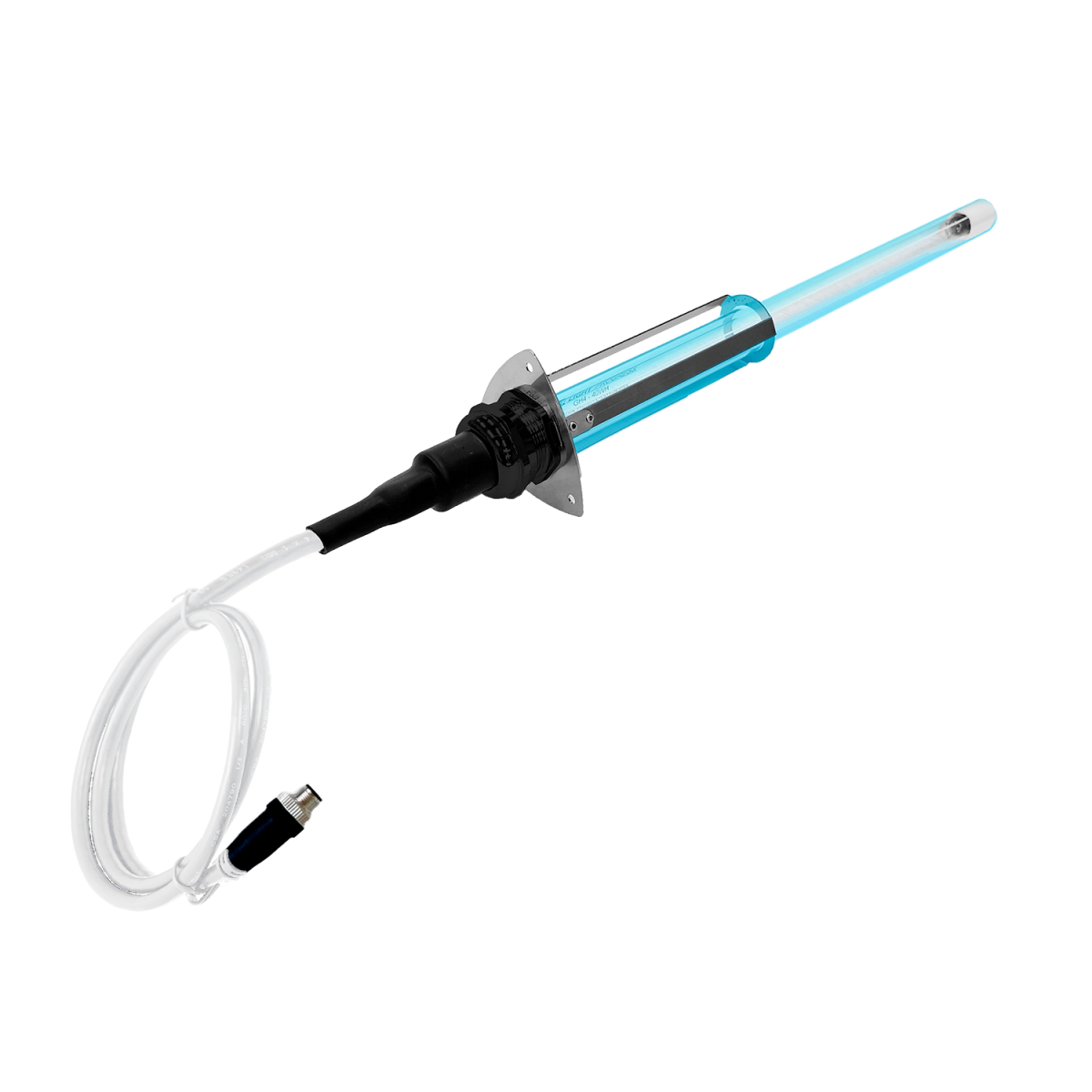
.JPG)
UV-STYLO-S-C is composed of:
UV-STYLO-S-C is installed directly inside the aspiration system, also providing a plenum (ducts enlargement).
Its compact sizes and easy fixing allow you to apply the device in project or even retro-fit phase.
After making a hole on the duct wall, you just need to insert the UV-C emitting lamp through this hole and screw its flange on the external surface of the suction duct, without any complication.
The module is designed to be mounted alternatively or together with Light Progress special TiOx® filter, coated with nano-structured titanium dioxide and silver salts (optional) that, in combination with the very high UVC power emitted by lamps, is an excellent photo-catalyst that degrades pollutants and organic and inorganic compounds (SOV, NOx and VOC volatile organic compounds, nitrogen oxides).
TiOx® filter performs further oxidation of polluting particles, and contributes significantly to the deodorizing action of UVC.
The special materials used for UV-STYLO-S-C ensures IP 40 protection, high temperatures (45/50 °C) resistance, as well as endurance to fats.

UV-STYLO-S-C
UV-STYLO-S-C, installed inside the hood or ventilation system, significantly helps minimize the unpleasant odors, fats, and pollution generated during cooking in restaurants or industrial kitchens. The fats generated during cooking, complex chains primarily composed of carbon and hydrogen, absorb the intense energy when exposed to UV-C radiation. The molecules become more reactive, as they are in a higher energy state, and recombine with the oxygen in the air, resulting in what is known as "cold combustion." This reaction produces simple, odorless, and gaseous organic compounds, such as carbon dioxide (CO2) and water, which are easily released into the air.
So the air filtered by UV-STYLO-S-C during normal cooking, reduces the formation and deposits of fat and the consequent risk of fires, limiting also the growth of molds that feed usually on fats.
UV-STYLO-S-C reduces the need of aspiration system cleaning and maintenance, extend filters’ life but, more importantly, offers the possibility to work safely.
UV-STYLO-S-C uses UV-C lamps and/or UV-C+O3 (Ozone) lamps, and it is the firts device in the market that can handle ozone or ozone-free lamps, alternatively or even combined together, according to clients’ needs.
In these kind of applications, UV power is often enough to reach great results, but ozone, persisting in air for few seconds before turning in simple oxygen, maximizes UV-C performances.
DISCOVER THE PRODUCTS

UV-SMELL-SQ
So the air filtered by UVSMELL- SQ during normal cooking, reduces the formation and deposits of fat and the consequent risk of fires, limiting also the growth of molds that feed usually on fats.
UV-SMELL-SQ reduces the need of aspiration system cleaning and maintenance, extend filters’ life but, more importantly, offers the possibility to work safely.
UV-SMELL-SQ uses UV-C lamps and/or UV-C+O3 (Ozone) lamps, and it is the firts device in the market that can handle ozone or ozone-free lamps, alternatively or even combined together, according to clients’ needs.
In these kind of applications, UV power is often enough to reach great results, but ozone, persisting in air for few seconds before turning in simple oxygen, maximizes UV-C performances.

UV-SMELL-A
Results of this reaction are organic and odorless short chain gases, such as carbon dioxide (CO2), water, etc.., normally present in air. So the air filtered by UV-SMELL-A during normal cooking, reduces the formation and deposits of fat and the consequent risk of fires, limiting also the growth of molds that feed usually on fats. UV-SMELL-A reduces the need of aspiration system cleaning and maintenance, extend filters’ life but, more importantly, offers the possibility to work safely.
UV-SMELL-A uses a UV-C amalgam lamp + O3 (Ozone) lamps.This type of bulbs, unlike the standard low pressure UV-C lamps, use a special “amalgam” made with metals, which optimize the UV germicidal power efficiency. Amalgam systems allows triple the UV-C emission compare to a low pressure lamp with the same length, and up to 16.000 hours life that guarantee a consequent cost saving. Furthermore the Ozone, persisting in air for few seconds before turning in simple oxygen, maximizes UV-C performances.

UV-HOOD
The fats generated during cooking, complex chains primarily composed of carbon and hydrogen, absorb the intense energy when exposed to UV-C radiation. The molecules become more reactive, as they are in a higher energy state, and recombine with the oxygen in the air, resulting in what is known as "cold combustion." This reaction produces simple, odorless, and gaseous organic compounds, such as carbon dioxide (CO2) and water, which are easily released into the air.
So the air filtered by UV-HOOD during normal cooking, reduces the formation and deposits of fat and the consequent risk of fires, limiting also the growth of molds that feed usually on fats.
UV-HOOD reduces the need of aspiration system cleaning and maintenance, extend filters’ life but, more importantly, offers the possibility to work safely.
UV-HOOD uses UV-C lamps and/or UV-C+O3 (Ozone) lamps, and it is the firts device in the market that can handle ozone or ozone-free lamps, alternatively or even combined together, according to clients’ needs. In these kind of applications, UV power is often enough to reach great results, but ozone, persisting in air for few seconds before turning in simple oxygen, maximizes UV-C performances.




